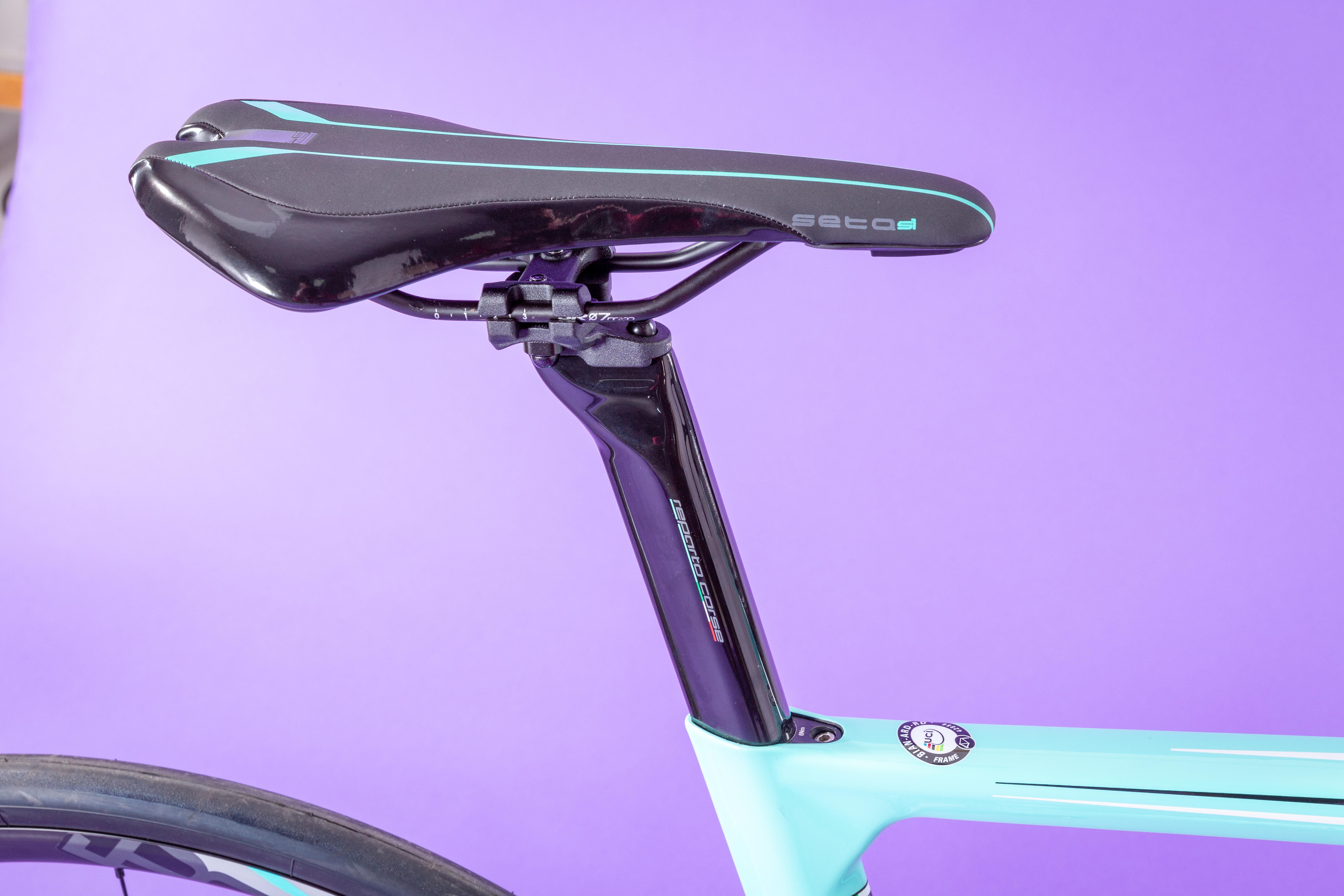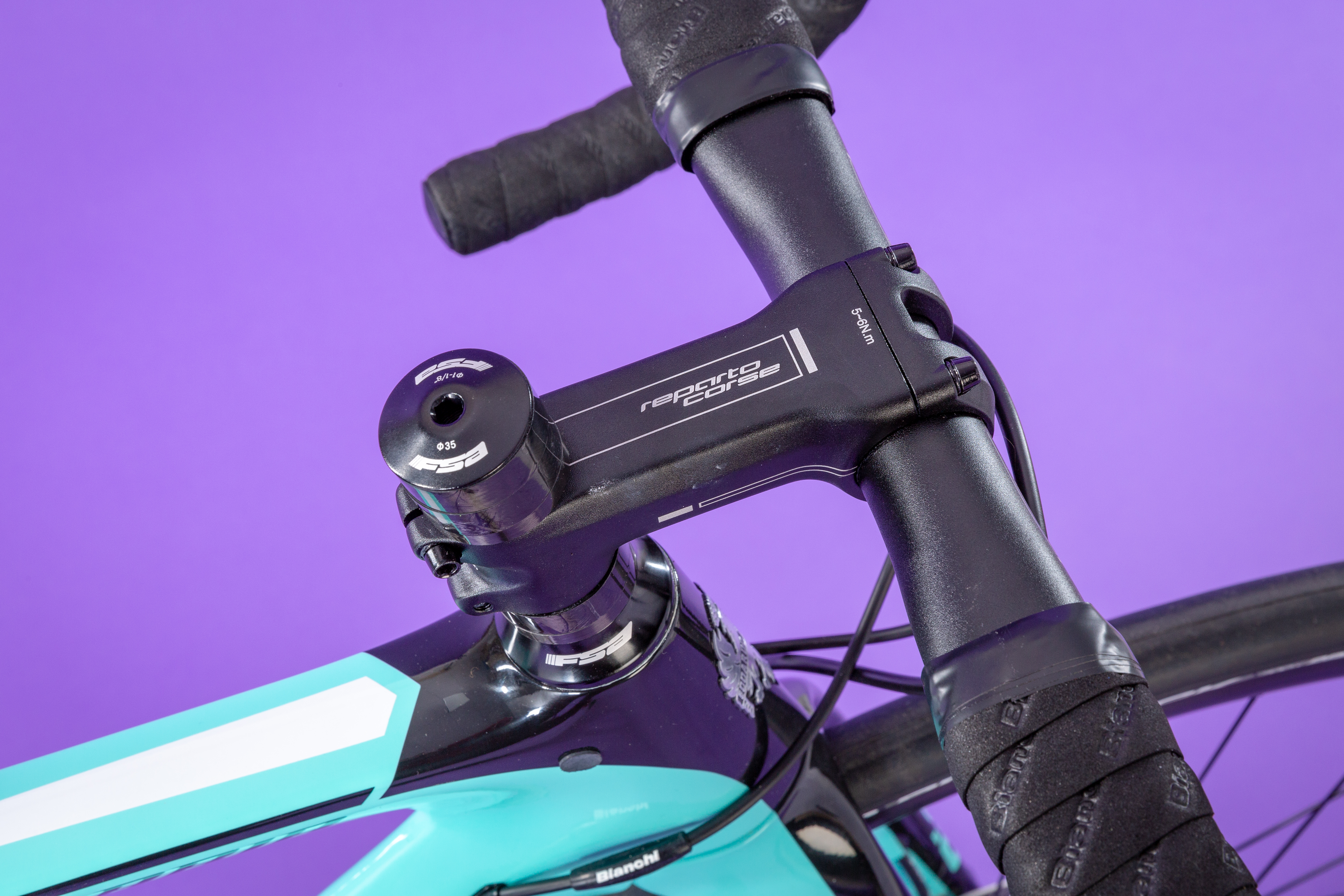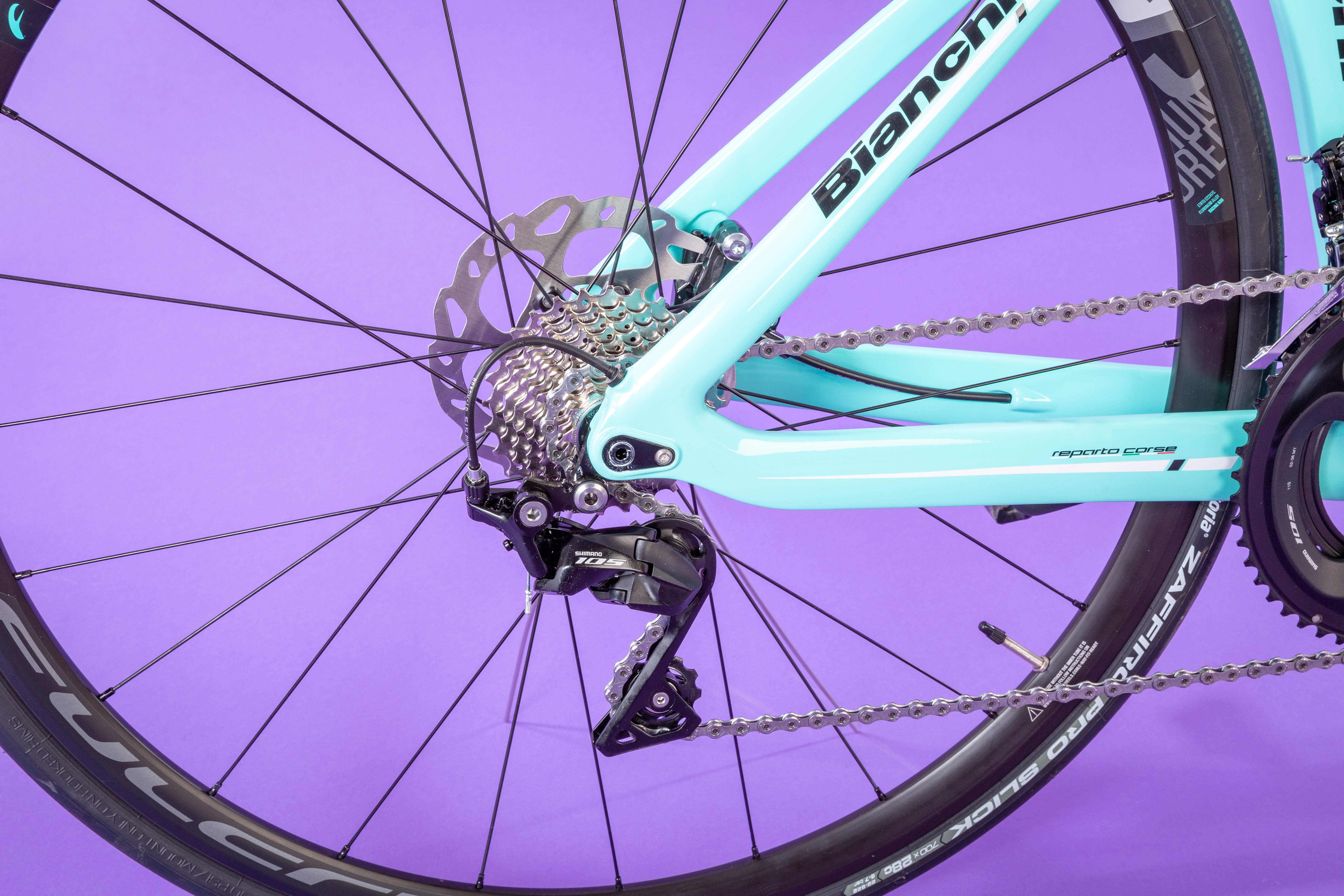Bianchi Aria Disc 105 review
Bianchi's lower-end aero bike aims to offer wind-cheating speed without the Oltre premium price tag, but compromises have to come somewhere

A fast and furious piece of speed weaponry that will put a smile on your face when pushing the pedals hard, with plenty of stiffness and acceleration on offer. However, a lack of compliance on long rides let it down.
-
+
Stiff
-
+
Plenty of adjustability in fit
-
+
Climbs well
-
-
Harsh ride
You can trust Cycling Weekly.

The Bianchi Aria aims to bring the wind-cheating attributes of its top-end Oltre bikes to a market that isn't quite ready to part with the £3K+ price tag attached.
That isn't to say it's an entry-level machine: it's a race bike that's loaded with tech and spec designed to ensure the bike slices through the air in a race environment.
The frame features some of the most angular shapes we've seen in an aero bike, perhaps emphasised by the smaller than typical size of our 50cm machine on test.
The frame and fork lock together to reduce drag, and both the fork and seatstays have been inspired by wind-tunnel testing for the Aquila TT bike.
There's an aero seatpost which sits at a 20mm offset and comes with an integrated clamp.
The clamp, like many aero designs, uses an expander bolt and we did encounter issues with the mechanism falling into the frame when adjusting saddle height – though this can be avoided if you take it slow and try not to reduce the tension in the bolt by too much.

We have to trust the wind tunnel claims, but the combination of angular shapes certainly adds up to a bike that looks fast.
The latest race content, interviews, features, reviews and expert buying guides, direct to your inbox!
It's not just about the bike, though – Bianchi worked with its pro riders to design a 'reactive geometry' that allows riders to get into the very best aero tuck that they can. As they note, 'aero frame plus aero rider position equals [the holy grail of] Full Aero'.
A size 50 Bianchi Aria comes with a stack of 499mm and reach of 387mm – that's identical in stack to the Oltre XR4 and 3mm longer, though this could be accounted for in the long-reach aero bars of the more expensive bike. To put that into perspective, a comparable 52 in a Specialized Tarmac offers 527mm and 380mm whilst a Cannondale SuperSix Evo 536mm and 381mm.
At the front, there's around 40mm worth of spacers, which can by used to adjust the bike from anywhere between a fairly comfortable position (as long as you're OK with a big ol' stack of spacers), to a super aggressive position.
Riding semi-slammed, I was more than low enough to call this a race position – indeed I was almost kneeing myself in the chest [to put it politely] when on the drops.

My first ride out on the Aria was a two hour 'zone two' chill ride amid my local hills. To be honest, I wasn't entirely enamoured.
Getting out of the saddle to climb out of the valley which I call home, I was impressed by the stiffness of the front end and the quick acceleration thanks to that short rear triangle. The bike climbs well for a disc-brake aero machine.
However, on the rumbley roads around Kent, trundling along the Ridge and down to Westerham towards Toys Hill, I found the position was stretched in a way which didn't exactly dissipate the fatigue I was trying to shake off on a recovery ride, and the carbon felt harsh and unforgiving even with the 28c tyres at 80psi.
Much of the Aria's price drop in comparison with the Oltre range is that it lacks the Countervail technology found at the more expensive end of the stable. Countervail, which was specced on the top end Oltre XR4 I awarded 10/10, involves the embedding of a layer of viscoelastic material across the frame to create spring and compliance.

The Bianchi Aria uses thin tubes at the rear end, so buzz can be filtered over a larger area, and disc brakes allow for wider tyres in an attempt to offer comfort. Despite these attributes, at slow speeds I didn't feel particularly protected from the roads.
Not ready to write the bike off, I took her out for a faster smash-up around the lanes surrounding the Cycling Weekly office.
Riding on a wheel and pushing on when on the front, the bike felt considerably faster and smoother as the pace increased. The bumps in the road felt less noticeable and the stiffness came into its own when sprinting for the brows of hills.
To complement the long and low set-up, Bianchi has gone hard on the handling, with a super steep 74.5º head angle and pretty standard 58mm trail.
A Euro brake set-up meant I didn't truly let go enough to smash it down any descents, but pushing into corners the handling was notably sharp. Indeed, initially it took a little getting used to as the front end seemed to drop into bends quicker than most.
Anyone with a need for speed who doesn't want to ever amble through the countryside (or has a dedicated bike for that) would probably love this machine. It's also advertised as a bike ideal for triathlons, and with clip on bars you could get into a good flat-back position for swim/bike/run events or time trials alone.
Personally, I really like a bike to give me a little bit of everything, and I can't see the Bianchi Aria and me enjoying four-hour club runs together.
In terms of the groupset, for your £2,875 you get a Shimano 105 R7000 groupset with flat mount hydraulic disc brakes, the gearing being a semi-compact 52/36 with 11-28 cassette. The range starts at £2,400 with Shimano 105 and rim brakes and shoots up to £4,400 with Ultegra Di2 disc. Bianchi has had a recent price rise, so you may find inconsistencies online.

The aluminium Fulcrum Racing 618 disc wheels are shod with 28c Vittoria Zaffiro Pro Slick clincher tyres, which personally I'd swap out for something a bit racier on a bike such as this.
The build came with a Sella Royal Seta S1 saddle and Reparto Corse Aero Compact handlebars in a size 40cm, both of which I swapped to test ride the bike – the Aria is not available in a 'Dama' build with a women's saddle and narrower handlebars.
Value
At £2,875 with Shimano 105, Bianchi is certainly asking you to reach deep into your pockets for the aero credentials on offer. It's also worth noting that the Oltre XR3 range begins at £2,950, albeit with Shimano 105 and rim brakes.
If aiming to go for an aero bike from Bianchi at a price similar to this Aria, I'd be tempted to save up an extra £75 and opt for a slight reduction in braking power in order to enjoy the Oltre XR3's Countervail tech. The components might be a step down, but I reckon the Countervail is notable enough in its absence to be worth paying for.
Michelle Arthurs-Brennan the Editor of Cycling Weekly website. An NCTJ qualified traditional journalist by trade, Michelle began her career working for local newspapers. She's worked within the cycling industry since 2012, and joined the Cycling Weekly team in 2017, having previously been Editor at Total Women's Cycling. Prior to welcoming her first daughter in 2022, Michelle raced on the road, track, and in time trials, and still rides as much as she can - albeit a fair proportion indoors, for now.
Michelle is on maternity leave from April 2025 until spring 2026.
